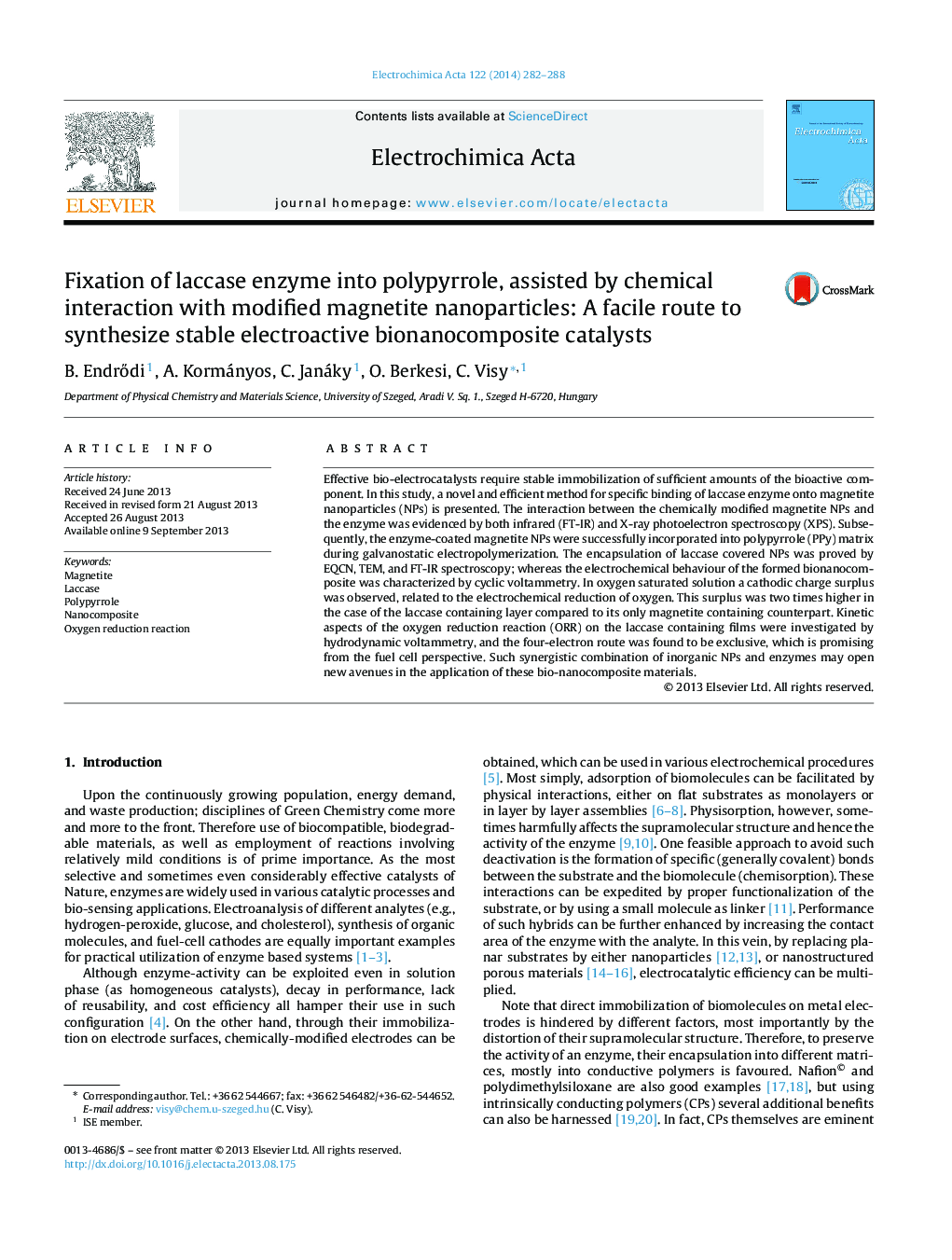| Article ID | Journal | Published Year | Pages | File Type |
|---|---|---|---|---|
| 186320 | Electrochimica Acta | 2014 | 7 Pages |
•Chemically immobilized laccase enzyme on magnetite nanoparticles is presented.•Modified nanoparticles were entrapped in conducting polymer matrix.•Bio-electrocatalytic effect was evidenced in the oxygen reduction reaction.•The method may serve as a general platform for enzyme incorporation.•New avenue for conducting polymer based biocatalytic electrodes.
Effective bio-electrocatalysts require stable immobilization of sufficient amounts of the bioactive component. In this study, a novel and efficient method for specific binding of laccase enzyme onto magnetite nanoparticles (NPs) is presented. The interaction between the chemically modified magnetite NPs and the enzyme was evidenced by both infrared (FT-IR) and X-ray photoelectron spectroscopy (XPS). Subsequently, the enzyme-coated magnetite NPs were successfully incorporated into polypyrrole (PPy) matrix during galvanostatic electropolymerization. The encapsulation of laccase covered NPs was proved by EQCN, TEM, and FT-IR spectroscopy; whereas the electrochemical behaviour of the formed bionanocomposite was characterized by cyclic voltammetry. In oxygen saturated solution a cathodic charge surplus was observed, related to the electrochemical reduction of oxygen. This surplus was two times higher in the case of the laccase containing layer compared to its only magnetite containing counterpart. Kinetic aspects of the oxygen reduction reaction (ORR) on the laccase containing films were investigated by hydrodynamic voltammetry, and the four-electron route was found to be exclusive, which is promising from the fuel cell perspective. Such synergistic combination of inorganic NPs and enzymes may open new avenues in the application of these bio-nanocomposite materials.
